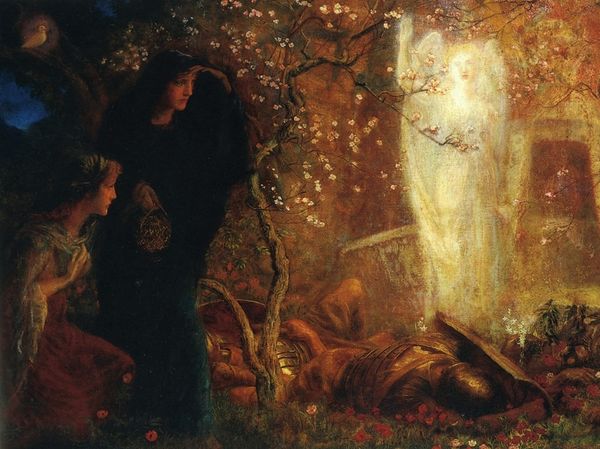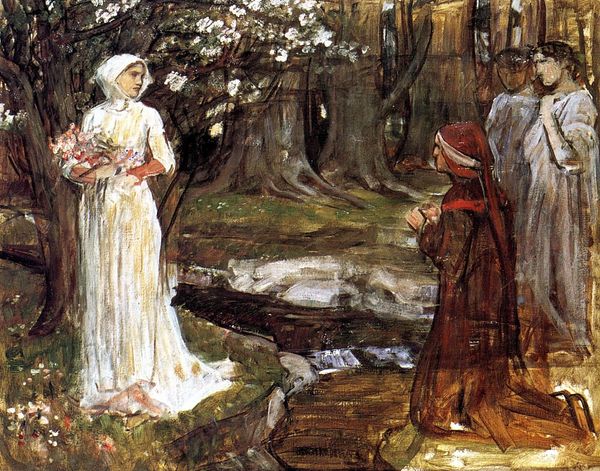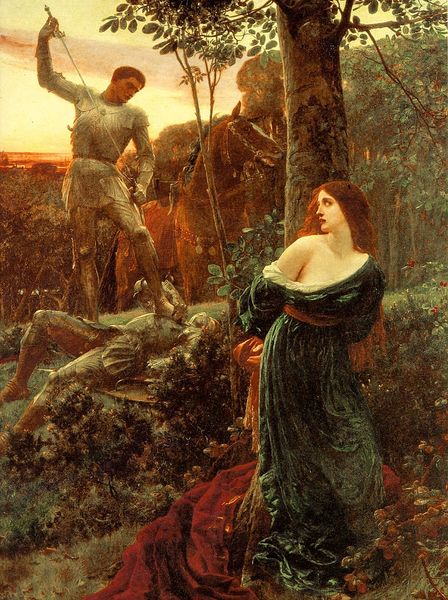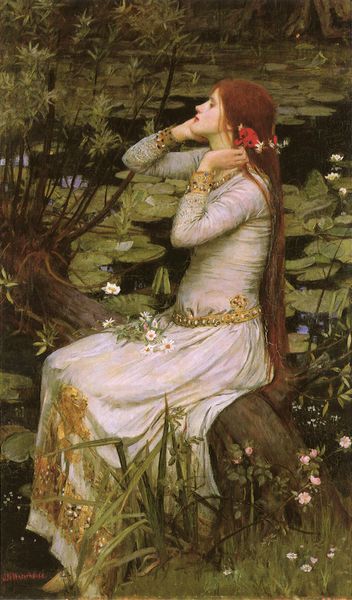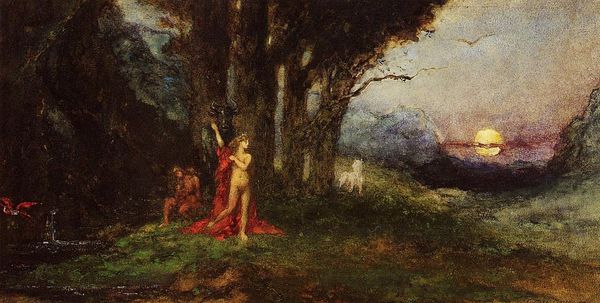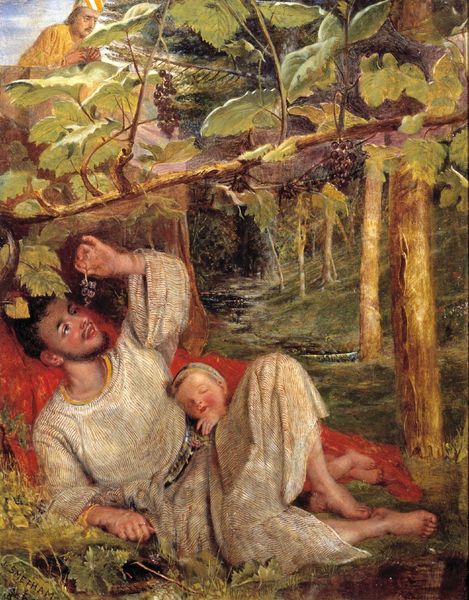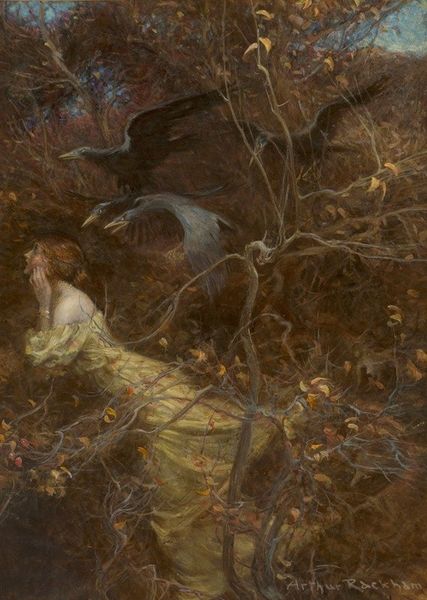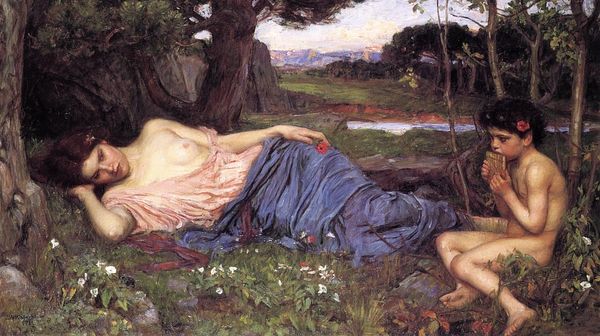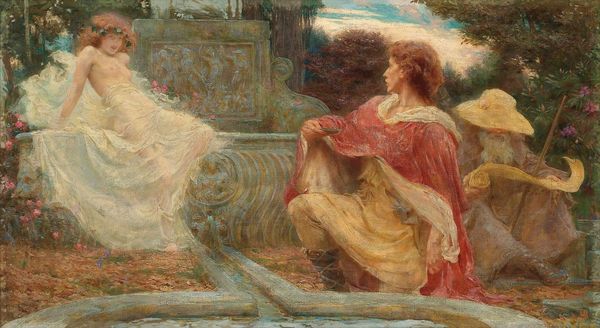
Dimensions: 97.79 x 146.05 cm
Copyright: Public domain
Curator: Looking at this painting by John William Waterhouse, executed in oil on canvas in 1917, titled "The Mystic Wood," I’m immediately drawn into a world saturated with symbolism. Editor: It’s certainly dense. All I can think about are the logistics involved. Look at that thickly applied paint! How did he manage such texture, and did the rising cost of materials during wartime influence his process at all, I wonder? Curator: Beyond the materials, consider the imagery. We see figures at the edge of a forest encountering a white stag. The white stag, as a symbol, transcends cultures. It often signifies purity, the untamed wild, or a spiritual quest, even a messenger from the divine. Editor: Right, but the paint handling itself communicates something visceral too. See how the forest floor is almost carelessly rendered, like disturbed earth. The rough application contrasts with the delicate detailing on the figures' garments. The consumption of such vastly differing materials creates tensions—it’s almost contradictory. Curator: Perhaps the roughness you note echoes the wildness of the pagan world pressing in on the figures. There’s definitely an allusion to the classical story of Diana, Actaeon and his hounds is implied; look at that figure behind the trees and in the middle of the painting! This reminds us that this myth carries emotional weight with the concepts of sacrifice, revenge, and the blurred line between humanity and the animal world. Editor: Yes, and note Waterhouse's decision to use a canvas of this scale. The artist deliberately uses oil paint. Perhaps this decision reflects both traditional techniques of craftsmanship as well as new modern interpretations of these methods during that time. He seems intent to push the boundaries and to try out unconventional approaches to material processing to communicate that mythical message and to offer something totally new! Curator: Waterhouse’s “The Mystic Wood,” then, offers not only an aesthetic encounter but a deeply layered meditation on inherited symbols. I feel immersed in the ancient mysteries held within the forest, and it leaves me pondering our collective past. Editor: And considering Waterhouse's specific choices of medium and process, we are also given an example of an artist pushing the conventions and norms in art to come. It highlights the material reality underpinning his symbolic narrative and also, ultimately, this method is part of a constantly developing movement in the contemporary age of artmaking.
Comments
No comments
Be the first to comment and join the conversation on the ultimate creative platform.
